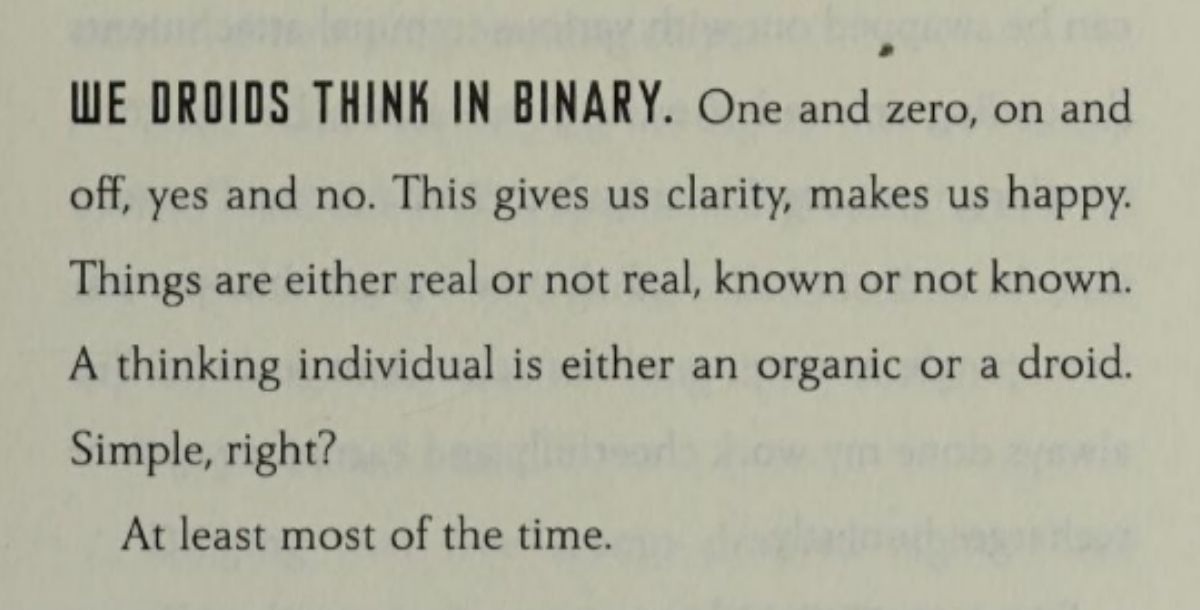I was scrolling through Reddit the other day and came across this post on r/StarWars:
“Why don’t all droids just speak in a language that’s easily understood? You’d think that’d be important if you’re supposed to communicate with them.”
The OP has a great point. In Star Wars, some droids speak Galactic Basic like it’s nothing—C-3PO can talk to just about anyone. But then you’ve got R2-D2, Chopper, or BB-8, who only speak in beeps and boops. Somehow, the main characters seem to understand them just fine… but not everyone else does.
So why hasn’t the galaxy just standardized droid speech? Why give your astromech a voice that most people can’t even understand?
1. Astromech Droids Prefer to Speak Their Own Way
The first reason comes straight from Star Wars lore: astromech droids actually like speaking their own language.
I mean, we’ve all seen how droids like R2-D2 or Chopper communicate—it’s all beeps, boops, and warbles. That’s not just random noise; it’s called Binary or Droidspeak. It’s the standard language for astromech units, and it’s basically their native tongue. Think of it like how we use binary code in real-world electronics, “zeroes” and “ones” that machines can process fast and efficiently.
For them, Binary is faster, cleaner, and easier than trying to speak in full sentences like humans. And it actually makes them happy. We see this confirmed in the canon book The Legends of Luke Skywalker, where a Z7-series construction droid, who also speaks Binary, explains:
“We droids think in binary. One and zero, on and off, yes and no. This gives us clarity, makes us happy. Things are either real or not real, known or not known. A thinking individual is either an organic or a droid. Simple, right? At least most of the time.”

2. Different Droids Have Different Functions
We already talked about why astromech droids like speaking in Binary, but there’s another key reason why not all droids use Basic: different droids have different jobs.
Look at protocol droids like C-3PO. He’s built specifically to talk—to translate, negotiate, and communicate across cultures. That’s why he’s fluent in over six million forms of communication. His whole design revolves around talking to people.
But droids like R2-D2, mouse droids, or utility workers? They’re not made to hold conversations. They’re there to assist with mechanical tasks, navigation, repairs—you name it. As long as they can understand commands, that’s enough. No need for full conversation. They’re tools, not companions.
So it makes sense they speak Binary. It’s faster, cleaner, and works perfectly for machine-to-machine communication or talking to systems. You don’t need fancy speech if you’re just plugging into a ship and fixing its hyperdrive.
There’s also a fan theory that adds a pretty good tech reason into the mix: in the Star Wars galaxy, wireless communication—like our version of Wi-Fi- isn’t commonly used, especially for droids.
Why? Because it’s not secure.
Instead of risking someone hacking into a signal or intercepting commands, droids either plug directly into systems (like R2-D2 jacking into a terminal), or they communicate verbally using Binary. It’s old-school, but reliable. You can’t intercept a beep like you can a broadcast.
This would explain why even B1 battle droids talk to each other out loud. You’d think they could just transmit silent commands instantly, but nope—they’re always chattering. It’s probably safer that way, especially during wartime.

